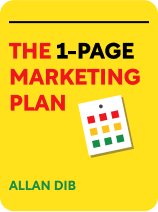

This article is an excerpt from the Shortform book guide to "The 1-Page Marketing Plan" by Allan Dib. Shortform has the world's best summaries and analyses of books you should be reading.
Like this article? Sign up for a free trial here .
What are some great techniques for capturing leads? How can capturing leads increase your sales?
In marketing, capturing leads involves collecting customer data so that visitors become potential customers. For example, someone visiting your website might give you their email to receive a free e-book.
Find out more about capturing leads below.
How to Capture Leads
The first step in increasing a potential customer’s familiarity with you is capturing their contact information in a database so you can follow up. Understanding this is the key to capturing leads and turning visitors into paying customers.
Capturing leads is important because only a small percentage of the people who express initial interest by, for example, downloading a free report or video, will be ready to buy immediately. But if you don’t capture their names and contact information, they’ll forget about you soon after viewing your ad, and you’ll lose the opportunity to turn them into customers later.
Dib notes that capturing leads in a database allows you to develop their interest over time, so a sale follows naturally.
Your marketing infrastructure (direct-response ads and database) is an engine that will keep generating sales for the future—Dib claims that while only 3% of leads may buy now, 40% may buy in the future.
To manage your marketing infrastructure, he recommends investing in a CRM system, or customer relationship management software that allows you to organize, track, and analyze customer data.
(Shortform note: In New Sales. Simplified., sales coach Mike Weinberg offers his own three-part method for generating new business: Strategically select prospects to pursue, create effective sales tools, and plan/execute. To generate leads, he explains how to create a list of likely prospects using online research and referrals. For instance, he recommends using LinkedIn to research an industry, identify leads by checking out your best customers’ LinkedIn contacts, initiate relationships, and share useful information. He also emphasizes meticulously planning your approach to the prospect, creating a well-crafted “sales story” and a scripted sales presentation.)
Cultivating Your Leads
After capturing leads, you have to cultivate them.
After a prospect has expressed interest and you’ve captured them as a lead in your database, the second step in the familiarity phase is continuing to develop their interest. You want to move them from being interested in your product to wanting it—and wanting to buy from you. Do this, Dib says, by making a series of contacts with the lead in which you:
- Deliver increasing value (for example, a newsletter, book, seminar, and/or free audit).
- Position yourself as an expert in your field.
- Build a trusting relationship.
These contacts will predispose leads to buy from you before you ever try to sell them. Most salespeople follow up on a lead only a few times—however, Dib recommends a multistep process in which you contact them 10 or more times. Your CRM can help with the follow-up work by sending automatic monthly emails to leads, alerting you when it’s time to make a follow-up call, and so on.
In traditional pressure selling, Dib notes that a dozen contacts would be unwelcome. But in a relationship built on trust and value, leads will welcome your contacts rather than feeling pressured or angry, and you’ll sell effortlessly and ethically.
(Shortform note: Along the line of building trust, many sales experts advocate a consultative method of selling, in which the salesperson asks questions about customer needs and concerns and helps create a solution to the customer’s problem. A version of this method is described in SPIN Selling.)

———End of Preview———
Like what you just read? Read the rest of the world's best book summary and analysis of Allan Dib's "The 1-Page Marketing Plan" at Shortform .
Here's what you'll find in our full The 1-Page Marketing Plan summary :
- How to create a marketing plan using a simple template
- A guide to the three customer-focused phases of marketing
- How to create enthusiastic superfans—and why they're essential






